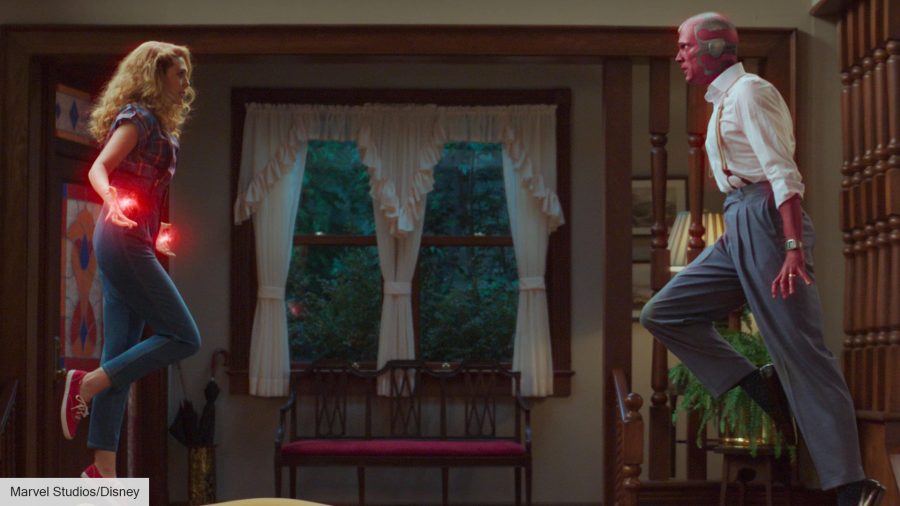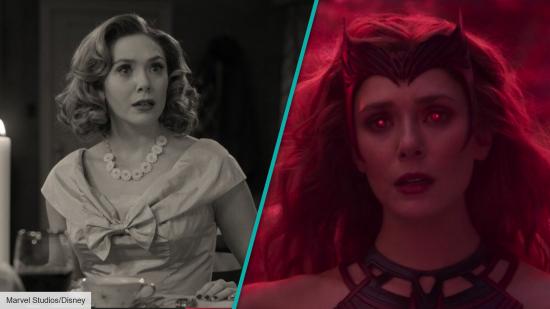International Women’s Day is a day devoted to ‘girl power,’ and who is more powerful than Scarlet Witch? As a Class 5 mutant, The Scarlet Witch is quite literally one of the strongest women to exist in the MCU — but all the superpowers in the world are still not enough for her to overpower the misogyny that is innately linked with her character.
The perpetual victim, we meet The Scarlet Witch (played by Elizabeth Olsen) in Avengers: Age of Ultron. From a young age, she was orphaned along with her brother Pietro Maximoff, due to bombings associated with Stark Industries. Although she definitely has a score to settle with the Avengers herself, it is established from the outset that her powers and actions are the result of experimentation and manipulation. She had little to no agency: being used merely as a pawn by male figures like Ultron, and later the Avengers, in order to meet their own means of an end.
A classical example of the ‘unstable powered woman’ trope, Maximoff’s powers are a physical manifestation of her emotions. As a woman, she is ill-equipped to handle her feelings and, in turn, is unable to handle her powers. It is up to the more rational beings, like the white, male leaders of the Avengers to keep her in check.
As seen in movies like Captain America: Civil War, Wanda’s instability in handling her powers causes her to be locked away and isolated. It was through one of these isolation periods that she ended up meeting the love of her life, Vision.
Whether intended or not, there’s a clear parallel between the way Wanda’s unstable, emotion-driven powers cause her to be kept under lock and key and the historic ‘rest cure’ inflicted on women believed to be ‘hysterical’.
In The Yellow Wallpaper, Charlotte Perkins Gilman tells the semi-autobiographical story of a woman who, after being diagnosed with a “slight hysterical tendency,” was confined to her room and forbidden from doing any kind of physically or intellectually stimulating activity “for her own good.”
Descend into madness: The best thriller movies
Back when The Yellow Wallpaper was published, hundreds and thousands of women were being diagnosed with a condition known as “hysteria.” The term has its origins in the word ‘hystera’, which is the Greek word for ‘uterus’, and suitably it was believed that the emotional instability that comes with having hysteria was something only women, the weaker and less rational gender, experienced.
As mentioned, Wanda’s powers are intimately connected with her emotions, so for a lot of the time in the early Avengers’ movies, she is treated as somewhat of a loose cannon. But is Bruce Banner, an Avenger with similarly emotion-driven powers that he has little control over, treated in the same way? Yes, but not for long— he is instead relied upon heavily as the brains behind a lot of the Avengers’ operations: a highly-regarded scientist who is acknowledged as being something more than their powers.

Another ‘cure’ for hysteria back in the day was thought to be a consummate marriage, because, of course, a woman can only be content and emotionally balanced if they are able to take up their defined roles in society. So, we see Wanda being presented on-screen as a more balanced, controlled version of herself now she is in a partnership with Vision (and who can be more rational and balanced than a robot-man?). She’s even allowed to join in with the fights sometimes!
Fight to the death: the best action movies
But then, when Vision dies, Wanda is overcome by grief, and the hysterical, overpowered woman trope returns with a vengeance. In WandaVision, Wanda is at her happiest, and Westview at its most stable, in the 1950s and 1960s, where she is able to live out her life as an adoring housewife and mother.
Without the opportunity to live her life this way, Wanda descends deeper into hysteria — and it must be noted that widows, childless women, and those who experienced infant loss were considered to be the groups who were most vulnerable to hysteria.

Equilibrium was achieved at the end of the TV series WandaVision, when Wanda underwent self-imposed isolation, but as she looks set to unleash her womanly emotions and powers in Doctor Strange 2, her hysteria is likely to resurface once again. Nobody here is out to defend Wanda — enslaving a town to play out your sitcom fantasies is all kinds of messed up — but it’s interesting how her villainy is presented a lot more forthright than other Marvel heroes who have committed their own wrongdoings out of grief.
Creating a monster: the best monster movies
When Hawkeye, as Ronin, and Frank Castle as the Punisher became bloodthirsty vigilantes, we were encouraged to sympathise with these tortured, sexy souls — what else were the poor guys meant to do when they lost everything? We were rooting for Hawkeye to keep his past as Ronin under wraps in his self-titled series, to keep the past buried and allow him to move on, but implicitly, that same forgiving nature isn’t seemingly present with Wanda.
In the Multiverse of Madness trailer, Wanda says: “You break the rules and become the hero. I do it, and I become the enemy. That doesn’t seem fair.”
She kind of has a point.
Wandavision, and all the Avengers movies, are available to watch on streaming service Disney Plus. Doctor Strange 2: Multiverse of Madness will be in theatres on 5 May, 2022.
